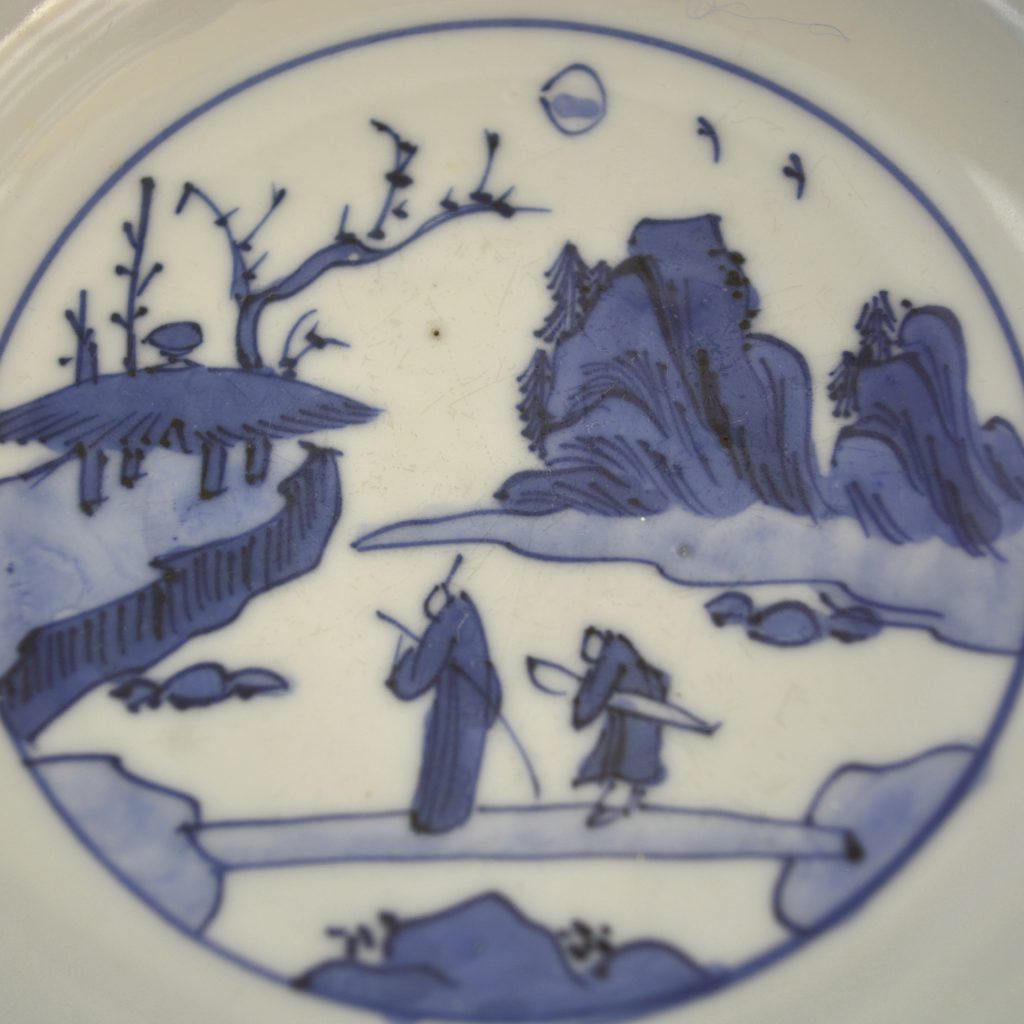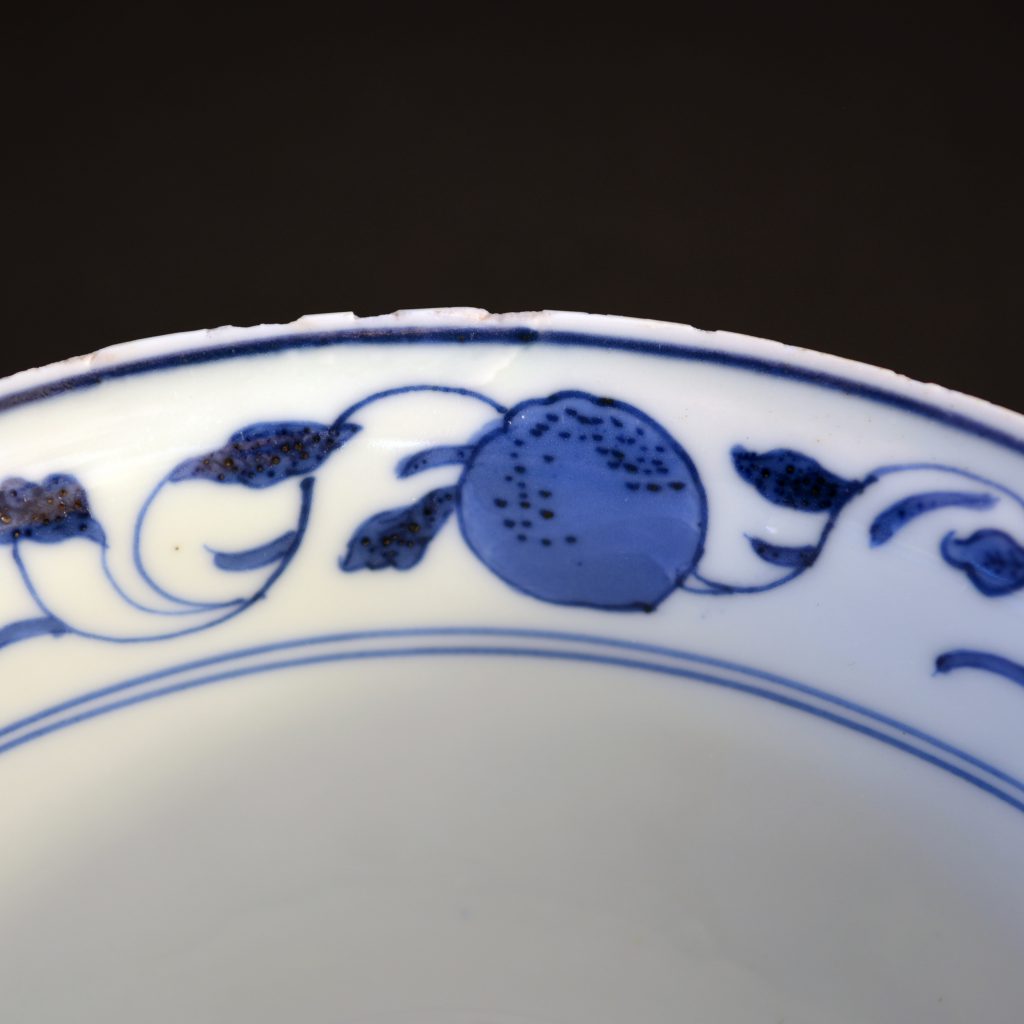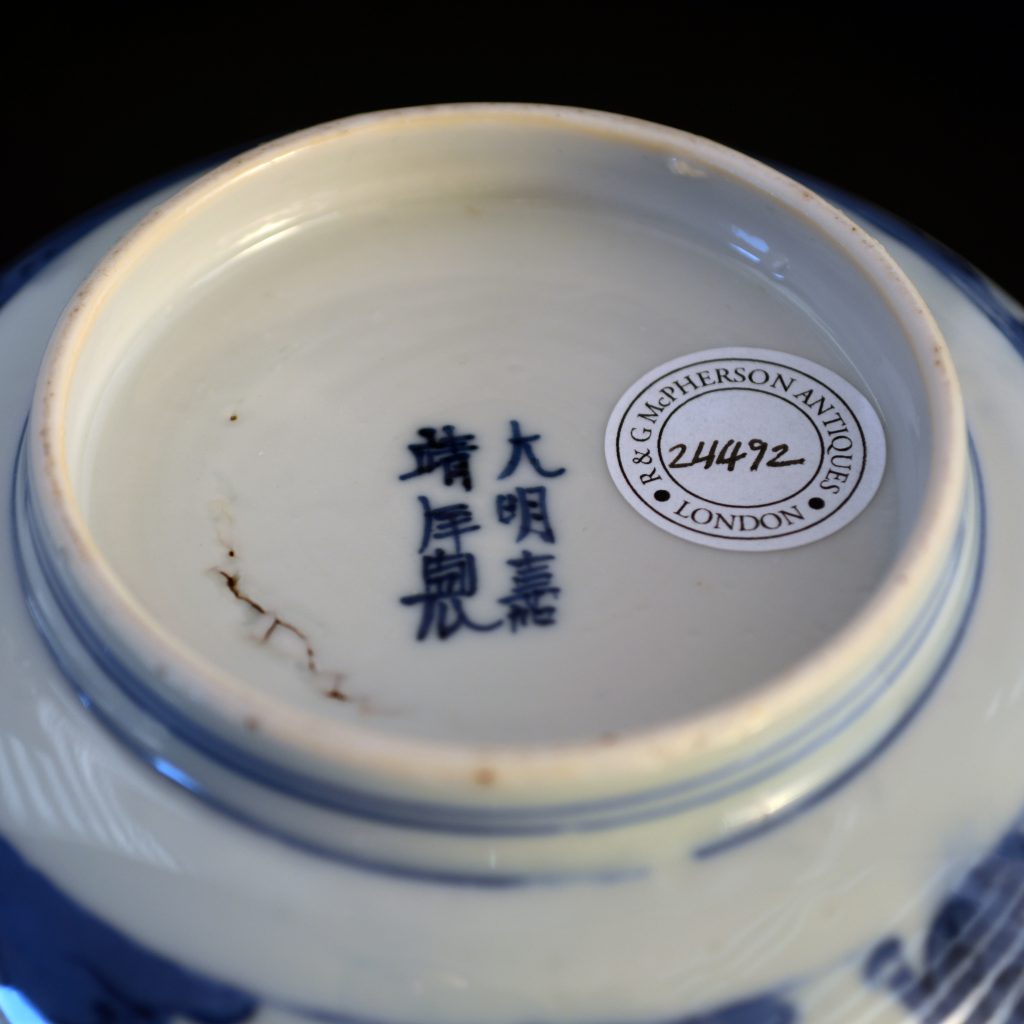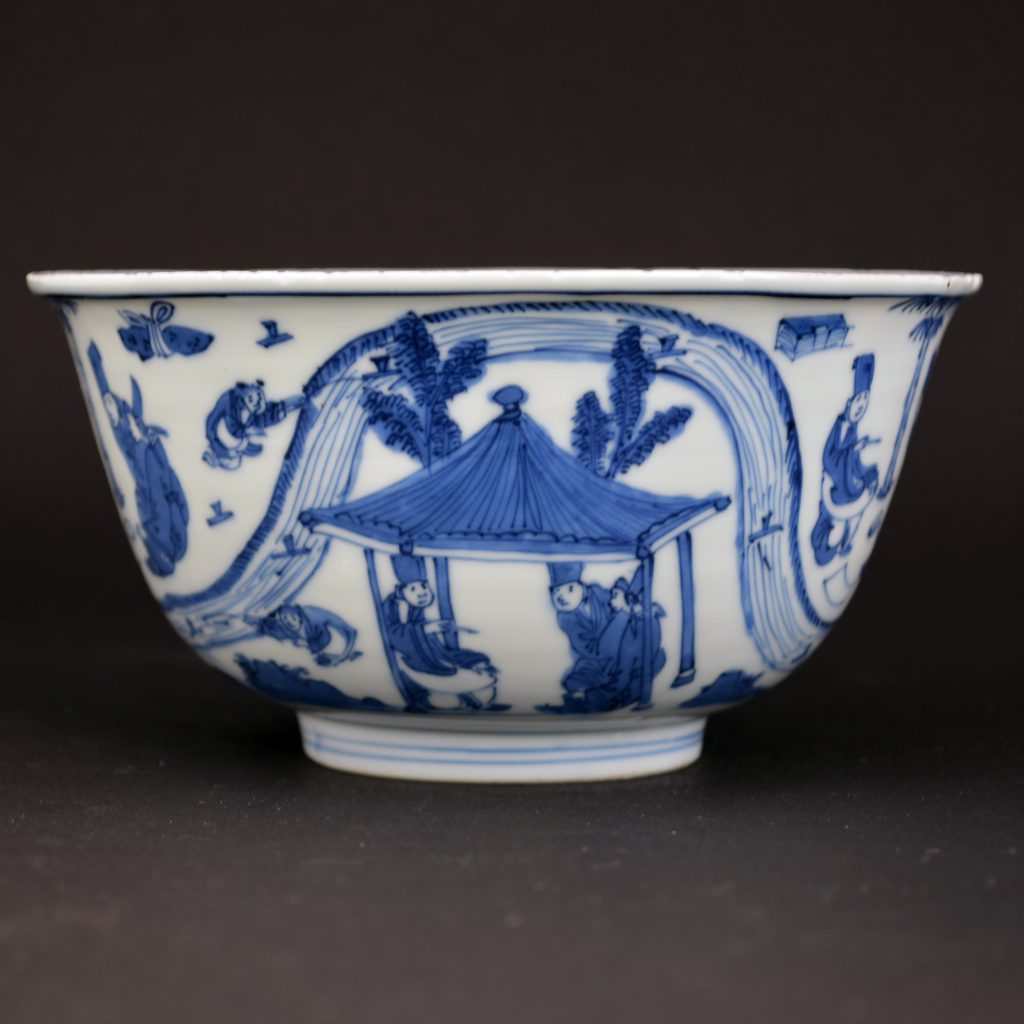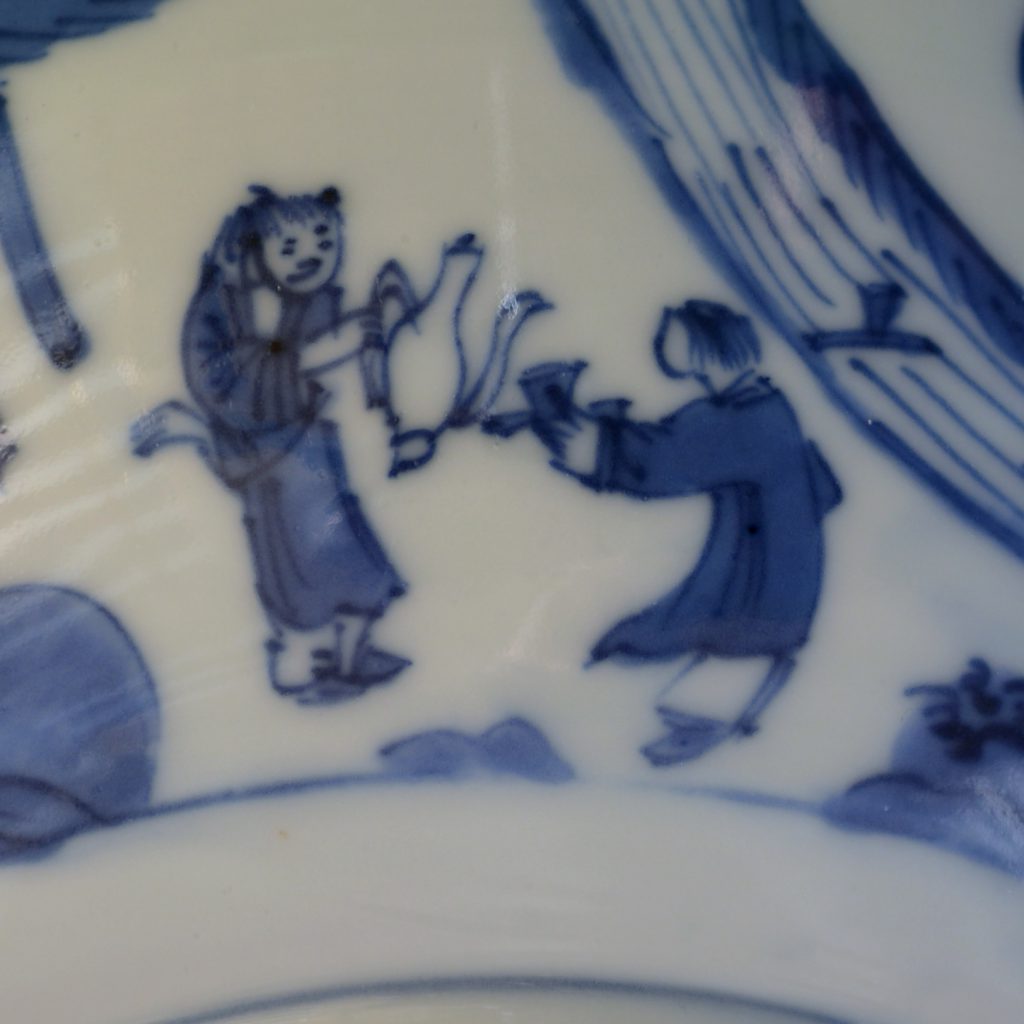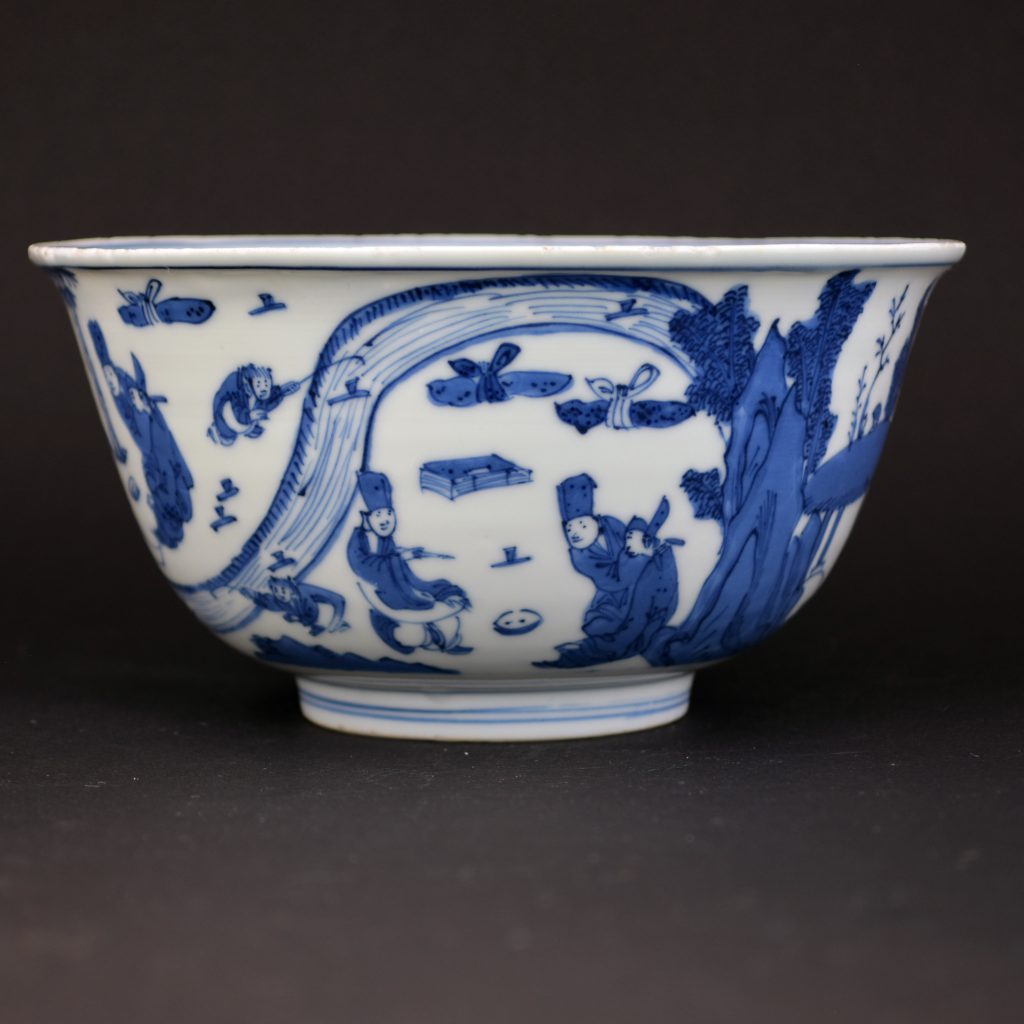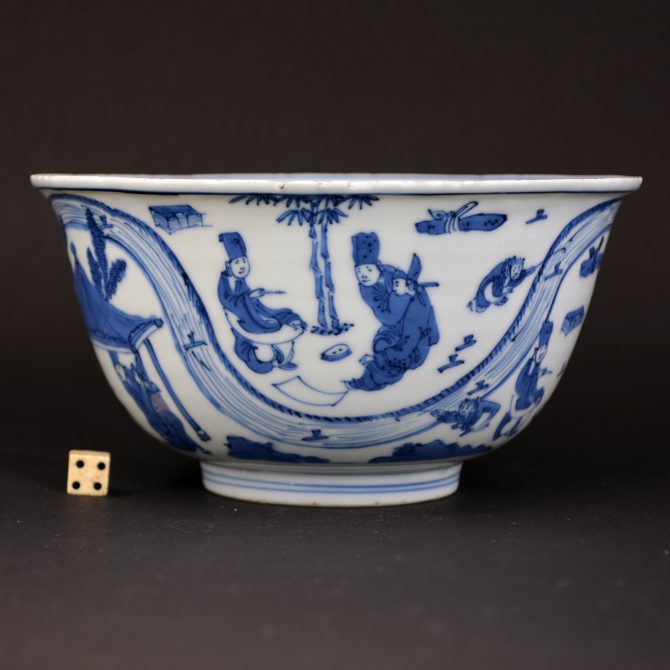
MING BOWL, JIAJING MARK AND OF THE PERIOD 1522-1566
A fine Ming blue and white porcelain bowl, Jiajing six character mark and of the period 1522-1566. Painted in vibrant tones of cobalt blue with the ‘Cup Game’ from ‘The Orchid Pavilion Gathering’. Despite this bowl having a six character mark and being of the period it is not an imperial piece.
SOLD
- Condition
- Some minute rim chips and fritting
- Size
- Diameter : 14 cm (5 1/2 inches)
- Provenance
- A Private English Collection Acquired c.1970.
- Stock number
- 24492
- References
- For a Ming bowl export ware bowl, Jiajing mark and period see : Chinese Ceramics in the Topkapi Saray Museum Istanbul, A Complete Catalogue II, Yuan and Ming Porcelains (Regina Krahl, Sotheby's 1986) page 681 item 1103.
Information
 The Orchid Pavilion Gathering :
The Orchid Pavilion Gathering :
The Orchid Pavilion Gathering depicts a literary convocation in celebration of the annual Spring Purification Festival. This festival, one of the oldest Chinese customs, took place each year on the third day of the third moon. Such activity was perhaps derived from ancient bathing customs in China. Lacking the convenience of modern plumbing, people could rarely afford to bathe during the winter. By springtime, when the weather became warm, a day was designated for all to bathe in the river.
To mark this occasion men of the educated classes traditionally held elegant parties at a scenic spot near water. The scholars played a special drinking game that incorporated a poetry competition. Servants would fill small cups with wine, set them on large leaves and place them in a stream. The cups then floated down toward the scholars, who sat on the banks. Those unable to provide suitable verse had to take a cup from the stream and drink the contents before resuming the game.
The setting of Sheng Mao-yeh‘s painting is an actual event held by 41 scholars who joined a Spring Purification gathering in 353 C.E. It took place at Lan-t‘ing (the Orchid Pavilion) in Shao-Hsing, Chekiang province. This party has for generations captured the imagination of artists of all kinds and is depicted not only in fine art, but also in popular decorative art such as lacquer ware, bamboo carvings and even snuff bottles.
This historical gathering is especially revered because of the presence of a distinguished guest: the legendary calligrapher Wang His-chih (371-79). Wang is considered the great sage of calligraphy and even today students strive to emulate his work. Inspired by the fine wine, the idyllic setting, the weather and the company during the celebration, Wang composed a preface to the anthology of the guests‘ collected poems. This piece, entitled Lan-t‘ing hsu or The Orchid Pavilion Preface, includes a rhapsodic description of the gathering and surroundings as well as a sentimental lament for the fleeting world. Enlivened by his superb calligraphy, Wang‘s preface is, even today, considered one of the classics of Chinese literature.
From :
Michigan Publishing, a division of the University of Michigan Library.
For more information please contact mpub-help@umich.edu.
Print ISSN: 1074-9055 • Online ISSN: 1558-741X
Jiajing :
From the beginning of Jiajing's reign, he was infatuated with young women and Taoist pursuits. He was known to be a cruel and self-aggrandizing emperor and he also chose to reside outside of the Forbidden city in Beijing so he could live in isolation while ignoring state affairs. Jiajing employed incapable individuals such as Zhang Cong and Yan Gao, on whom he thoroughly relied to handle affairs of state. He abandoned the practice of seeing his ministers altogether from 1539 onwards and for a period of almost 25 years refused to give official audiences, choosing instead to relay his wishes through eunuchs and officials. This eventually led to corruption at all levels of the Ming government. Jiajing's ruthlessness also led to an internal plot by his concubines to assassinate him in 1542 by strangling him while he slept. The plot was ultimately foiled and all of the concubines involved were summarily executed.
